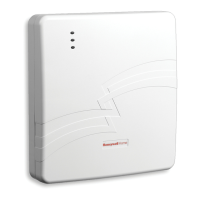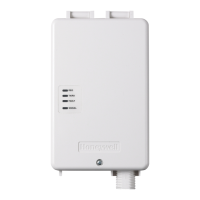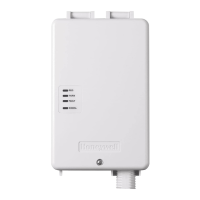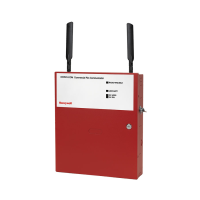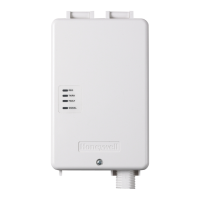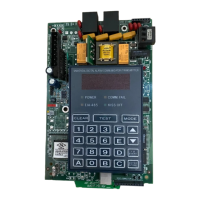Section 3: Programming the Communicator
25
PROMPTS OPTIONS DESCRIPTION
51
IP Connection
(Present)
Present
Auto Detect
This prompt appears only if comm. path is set to IP & Cell.
Press the [space] key to toggle between the options. Press [ENTER] to
select the configuration.
If “Present” is chosen, it is assumed that an IP is connected to the
device. If it is not detected, a Primary Comm Path Failure message will
be delivered after the programmed fault time expires.
If “Auto Detect” is chosen, the device will always try to use IP to
communicate but it will not generate a Primary Comm Path Failure
unless it previously detected the presence of IP. As soon as the
presence of IP is detected, a Primary Comm Path Restore message is
generated and the value of IP Connectivity programming parameter is
changed from “Auto Detect” to “Detected”.
From this point on, the software expects connectivity. The auto detect
logic will resume only when the parameter is changed back to “Auto
Detect”.
52
Review? Y/N
[Y] = review
[N] = exit
Reviewing Programming Mode Entries
To review the programming options (to ensure that the correct entries
have been made), press [Y]. The programming prompts are displayed
again. Use the up/down arrow keys to scroll through the program fields
without changing any of the values. If a value requires change, simply
type in the correct value. When the last field is displayed, the
“REVIEW?” prompt again appears.
To exit the programming mode, press [N] in response to the
"REVIEW?" prompt, and refer to Exiting Programming Mode at the end
of this section.
ECP Status Codes
When the communicator is configured for ECP mode, it sends status messages to the control
panels for battery, power, tamper, and network connectivity failures. Some of the control panels
(e.g., VISTA-10P, VISTA-15P and VISTA-20P Series) display these on the keypad as “LngRng
Radio” followed by a 4-digit code (listed in the table below). In addition, the Contact ID codes
(listed in Appendix B) for these conditions are sent to the central station by the communicator.
UL/ULC
The information in the following table is based on the VISTA-20 which has not been
evaluated with this communicator.
Table 3-3. Common ECP Keypad Display Status Codes
STATUS CODE DESCRIPTION
0000
Control panel lost communication with communicator.
0880
Communicator tamper detected (cover removed).
4005
Communicator has lost contact with AlarmNet.
000F
Communicator is not registered; account not activated.
0019
Communicator shutdown.
0400
Communicator power on / reset AND the control panel lost communications with
communicator.
0C80
Communicator power on / reset AND tamper detected.
0C8F
Communicator power on/ reset AND tamper detected AND not registered.
08E0
Communicator tamper detected and communicator battery low.
3000
Primary power loss (will only be displayed in conjunction with another event).
8000
Battery charger failure (will only be displayed in conjunction with another event).
0060
Low battery (will only be displayed in conjunction with another event).
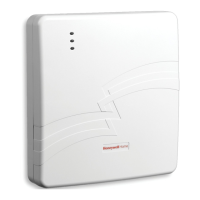
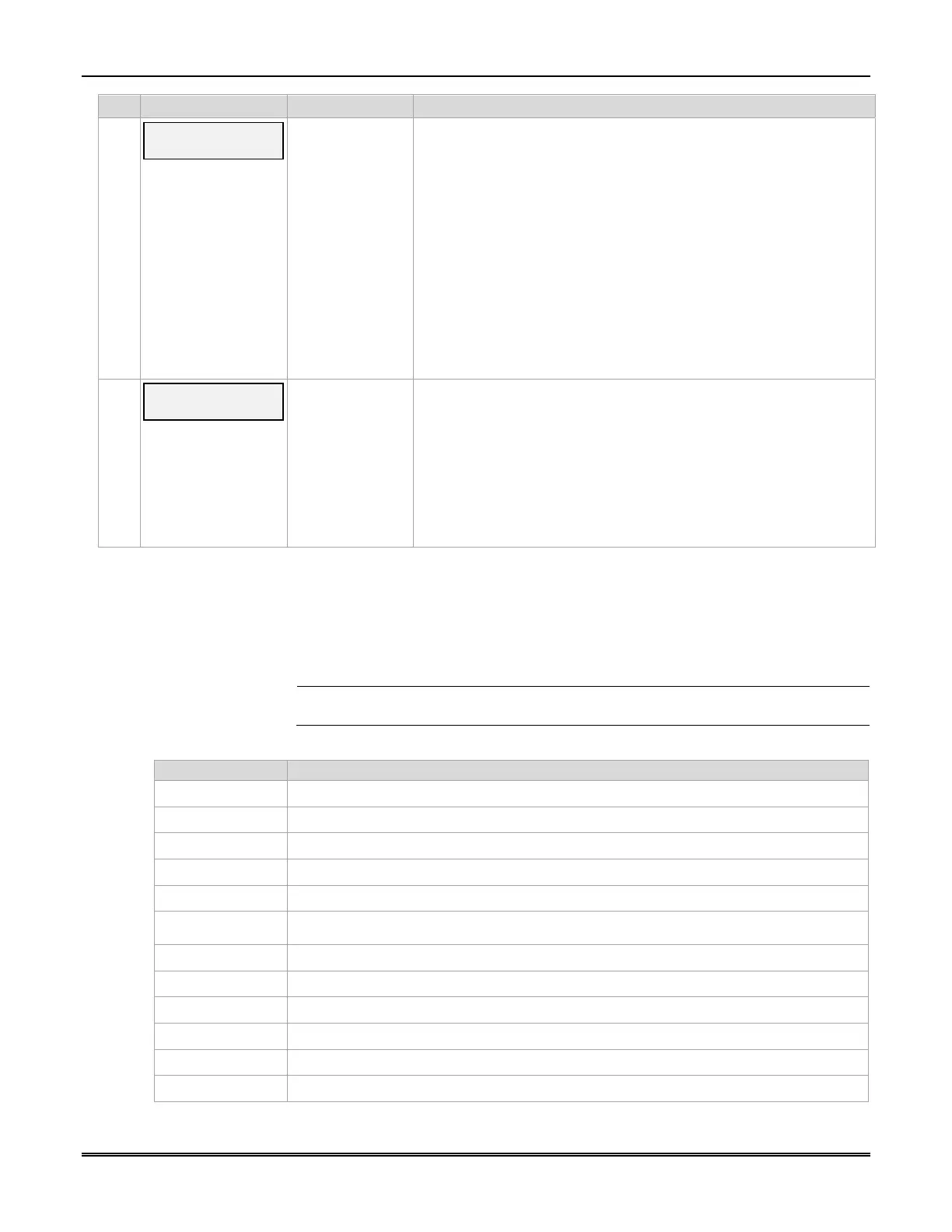